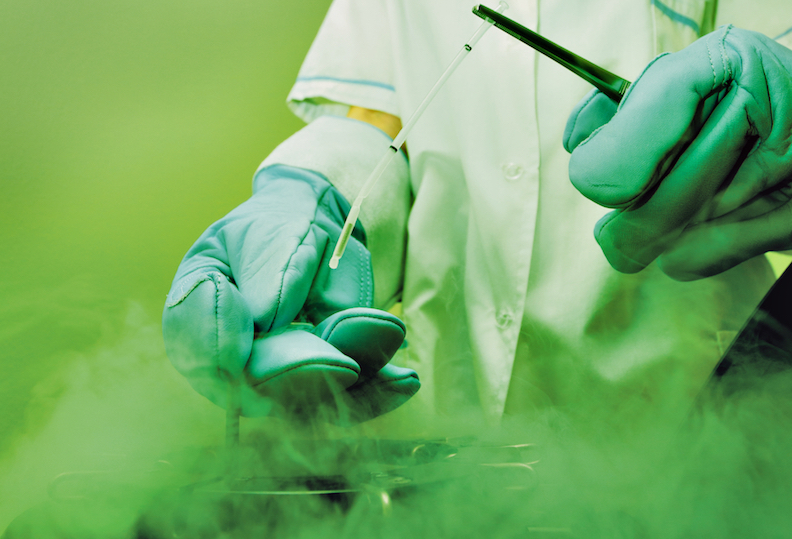The extreme cold of liquid nitrogen (LN2) tanks provides the ideal long-term storage environment for cells and other biological samples — the reason being biological activity is suspended at about -130℃, and LN2 tanks are typically much colder than that (down to -196℃ for liquid nitrogen).
Considering the nature of liquid nitrogen and its challenging properties, specialized, well-insulated LN2 tanks are susceptible to unique risks, making monitoring a critical part of operations.
The Unique Risks That Come with LN2 Storage Tanks
As liquid nitrogen evaporates into its vapor phase, it expands very dramatically to 694 times its liquid volume at room temperature. If an LN2 tank is too tightly sealed, the intense pressure build-up caused by LN2 evaporation could rupture the tank.
Even in very well-insulated LN2 tanks, liquid is constantly turning into gas. The liquid level will continue to drop until eventually all the liquid turns into gas, and the temperature inside the LN2 tank increases. To prevent this, liquid nitrogen is added regularly to the storage tank to ensure all samples are kept at extremely cold temperatures.
The key to successful sample storage is knowing when to add more liquid nitrogen to the tank. The rate at which liquid nitrogen “boils off” into vapor depends on a variety of factors, including:
- The insulation of the tank
- The thermal mass of the samples
- The size of the tank
- The size of the opening
- The insulation value of the lid
In some cases, larger LN2 tanks have “auto-fill” capabilities. Here, large LN2 storage tanks are located next to the sample storage tank, and when the liquid nitrogen level goes below a certain level, more LN2 is transferred into the sample storage tank. For labs that do not have autofill tanks, procedures are put in place to manually add more LN2 to tanks on a regular basis, especially prior to weekends or holidays.
If the lid is properly closed, most LN2 tanks will maintain the right temperature for at least a week. Opening the LN2 tank to add or remove samples causes liquid nitrogen to boil off faster, so tank activity is an important factor in the length of time between filling the tanks.
Three LN2 Tank Monitoring Methods With a Shared Goal: Reduce Risk
CORIS is the only company that offers a total of three methods for monitoring LN2 in tanks: an LN2 temperature probe, an LN2 level sensor, and an external LN2 tank temperature sensor. While both internal sensing methods give an early warning that an LN2 tank needs to be refilled, the external tank sensor will notify you if the tank has lost its structural integrity, and samples need to be moved to another LN2 tank.
By monitoring the temperature and the LN2 level inside the tank, staff can be notified/alerted when it’s time to refill the tank and when there is a temperature problem within the tank that needs to be addressed. Typically, there is a one- to two-day window to refill the tank before the temperature inside exceeds the optimal storage temperature. For those tanks with auto-refill liquid nitrogen available, LN2 tank monitoring will identify issues with the refill frequencies, as well as identify if the refill tank runs out of its LN2 supply.
By monitoring the external temperature of the LN2 tank, cracks in the tank or loss of vacuum insulation can be detected, allowing time to move samples to a different location. After a tank’s integrity is compromised, the LN2 will evaporate quickly and the temperature will rise. The dropping exterior tank temperature means that the LN2 is escaping from the side of the tank versus the top, so you will know that refilling the tank is not the solution to the problem.
To learn more about our LN2 tank monitoring solutions, get in touch with our team today.





